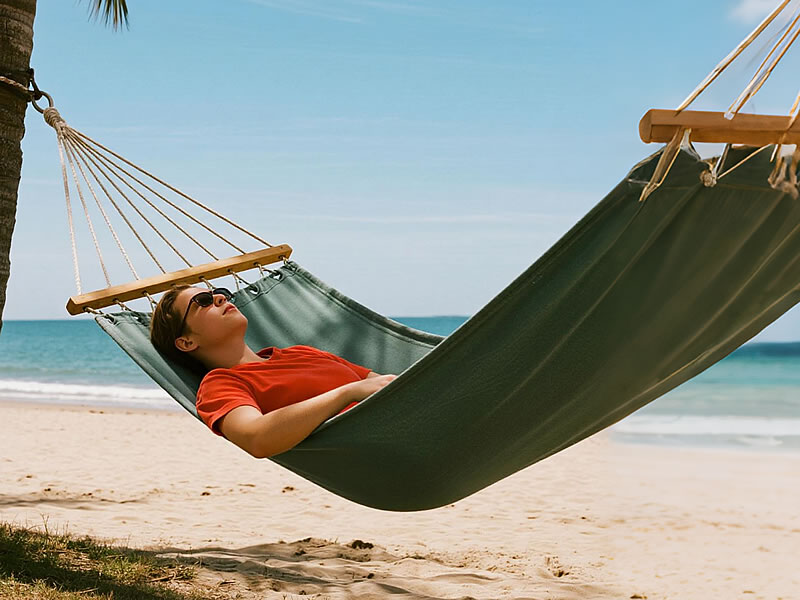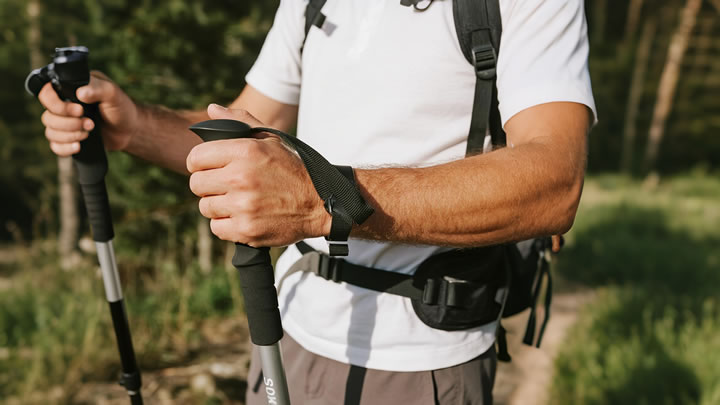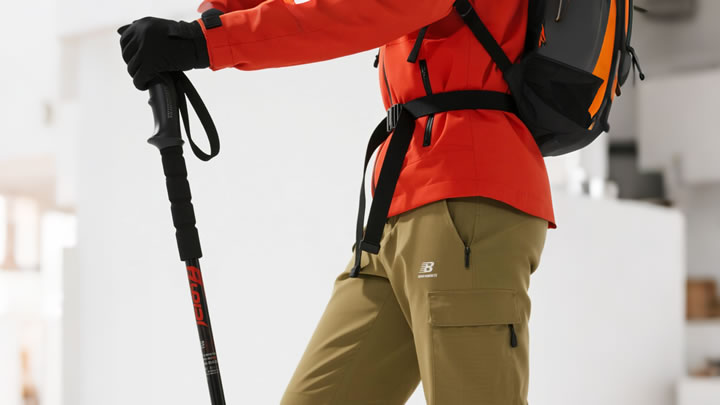Cotton vs polyester hammocks: which lasts longer outdoors?
When selecting a hammock for permanent outdoor use, material choice dictates longevity. While cotton offers classic comfort, polyester dominates in durability. This deep dive reveals why synthetic fibers outlast natural ones—and when cotton might still work.

The Decay Timeline: Real-World Lifespan Data
| Material | UV Exposure | Moisture Impact | Mold Resistance | Avg. Lifespan |
|---|---|---|---|---|
| Polyester | Loses 10% strength after 2,000+ UV hours | 0.4% water absorption | Immune | 5–8 years |
| Cotton | Loses 40% strength after 500 UV hours | 24% water absorption | High risk in >60% humidity | 1–3 years |
Source: ASTM D6544 accelerated weathering tests
Polyester: The Science of Synthetic Survival
UV Defense Mechanism
Polyester fibers contain UV-inhibiting titanium dioxide (TiO₂) that reflects solar radiation. Brands like Wise Owl Outfitters use solution-dyed yarns where pigments penetrate the fiber core, preventing fading.
Water Warfare
- Hydrophobic molecular structure repels water
- Dries 5x faster than cotton (tested at 70°F/50% RH)
- Zero fiber swelling → maintains tensile strength
Real-World Endurance
The ENO DoubleNest (210T polyester) shows minimal degradation after:
- 300+ rainy nights
- 1,800+ UV exposure hours
- Temperature swings from 14°F to 104°F
Cotton: Why Nature Loses the Battle
The Rot Sequence
- Night 1: Absorbs dew (↑24% weight)
- Week 2: Cellulose fibers swell → weaken
- Month 1: Microbial growth begins in core
- Season 2: UV photodegradation splits polymers
Case Study: Mayan Hammock Failure
- Pre-treatment: Untreated cotton
- Location: Florida porch (high humidity)
- Failure Point: 14 months
- Autopsy: Rotten core threads, 57% strength loss
When Cotton Works: The Niche Exceptions
Controlled Environments
- Covered porches with 360° rain protection
- Arid climates (<30% avg. humidity)
- Seasonal use only (stored winters)
Reinforced Hybrids
- Brazillian Style: Cotton-poly blends (70/30)
- Sunbrella Fabrics: Acrylic-coated cotton (lasts 4x longer)
Pro Revival Technique
- Brush off debris
- Soak in 1:4 vinegar-water solution
- Treat with Thompson’s Water Seal
- Air-dry fully before rehanging
Polyester's Hidden Weaknesses
- Abrasion VulnerabilitySand particles create micro-cuts in dry conditionsFix: Choose 600D+ fabrics (e.g., Kammok Roo)
- UV Degradation PointsStitching fails before fabric (use Tenara thread)Fades first at stress points (gathered ends)
- Heat RetentionSurface temps hit 131°F vs cotton’s 104°F in direct sunSolution: Select light-colored TiO₂-infused versions
Cost-Per-Use Analysis
| Hammock | Material | Price | Est. Lifespan | Cost/Year |
|---|---|---|---|---|
| Mayan Double | Cotton | $49 | 1.5 yrs | $32.67 |
| ENO DoubleNest | Polyester | $69 | 7 yrs | $9.86 |
| Sunbrella Deluxe | Hybrid | $299 | 12+ yrs | $24.92 |
*Conclusion: Polyester offers 3x better value long-term*
The Verdict: Engineering Over Aesthetics
Polyester is the undisputed champion for permanent outdoor use, resisting UV, mold, and moisture where cotton fails. For humid or rainy climates, it’s not even a contest.
Choose polyester if you need:
- Year-round durability
- Low maintenance
- Cost efficiency
Consider cotton only when:
- Using seasonally under cover
- Prioritizing hand-feel over longevity
- Willing to perform quarterly maintenance
Pro Tip: Hybrid hammocks (polyester base + cotton sleep surface) offer a compromise but cost 2–3x more.






